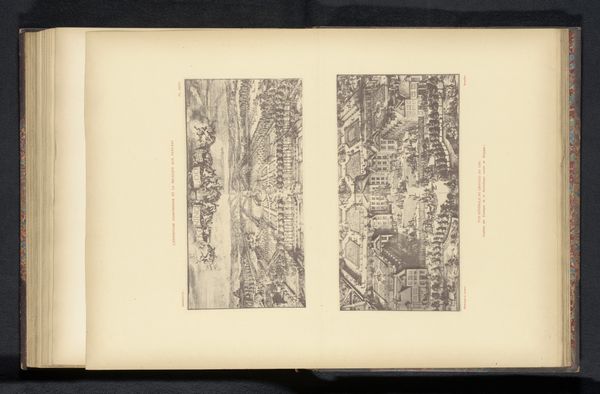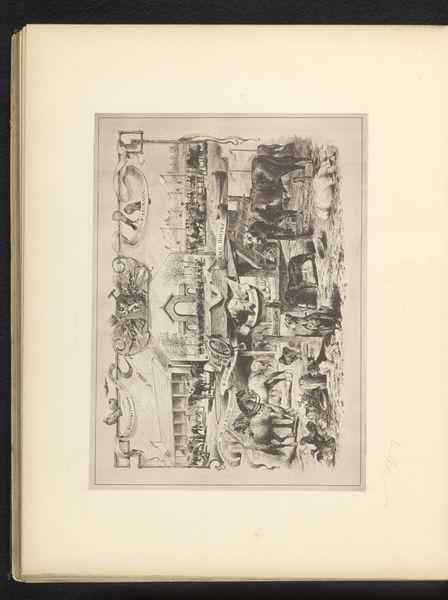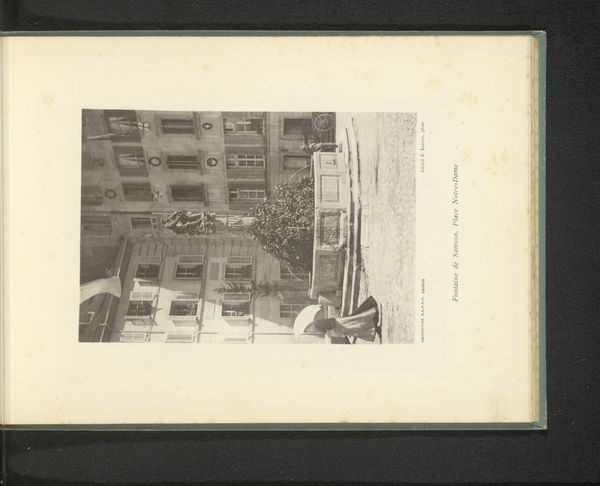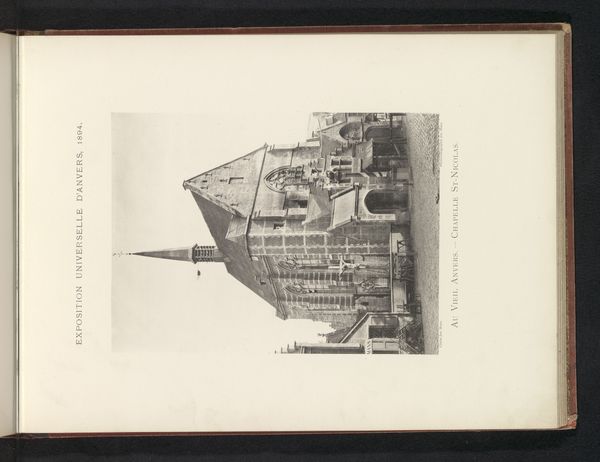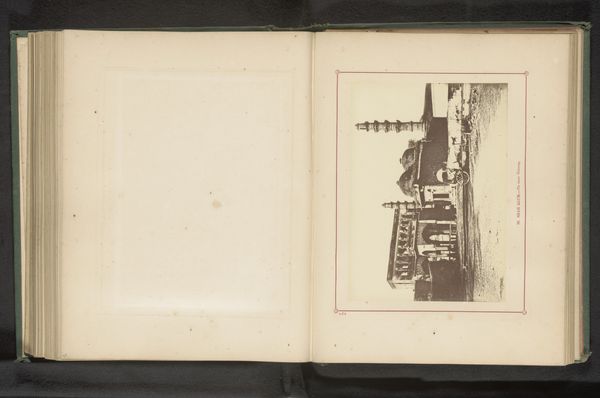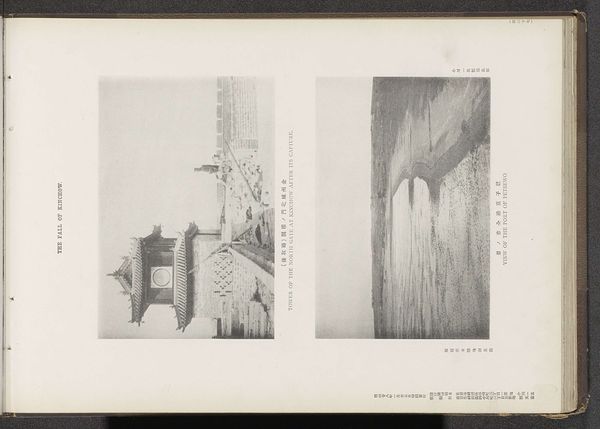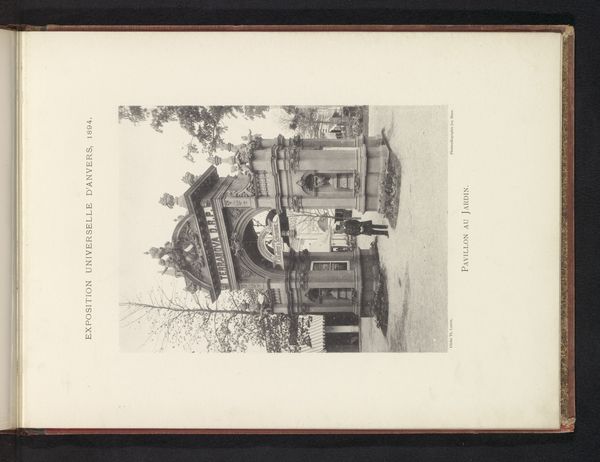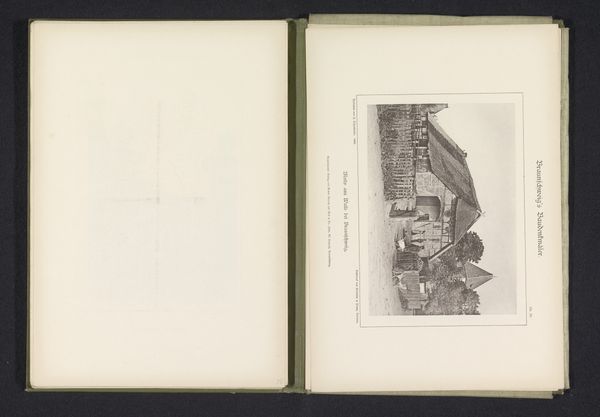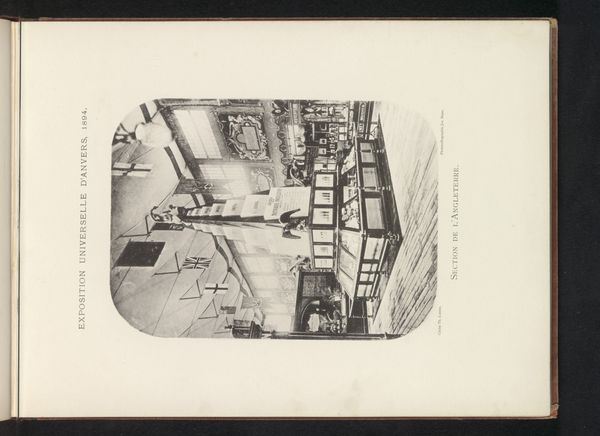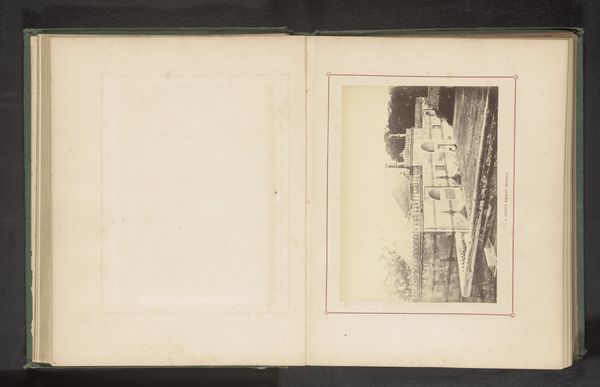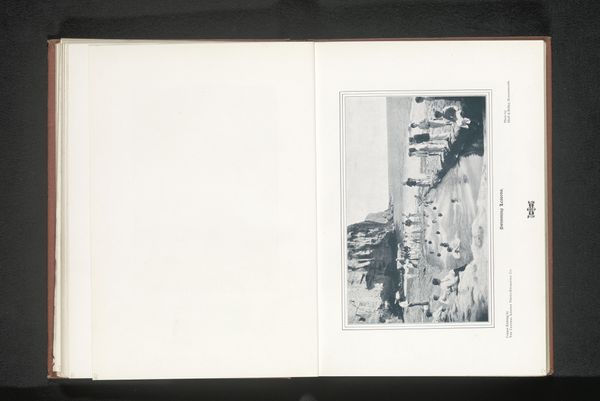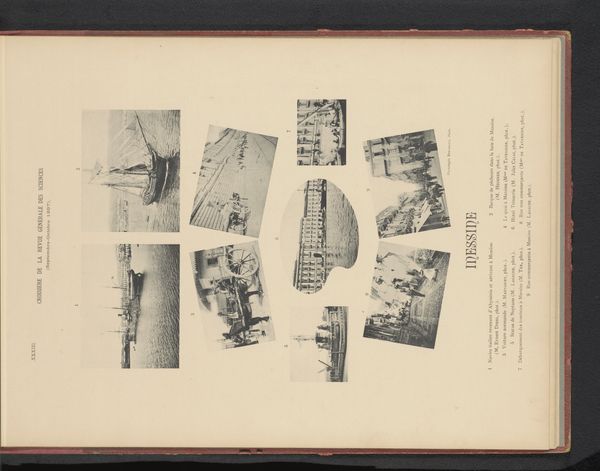
Twee gezichten op een waterschans tijdens de wereldtentoonstelling te Antwerpen 1894
0:00
0:00
print, photography
#
pictorialism
# print
#
landscape
#
river
#
photography
#
cityscape
Dimensions: height 360 mm, width 260 mm
Copyright: Rijks Museum: Open Domain
Editor: This is a photographic print from 1894, titled "Two Views of a Waterscape during the World Exhibition in Antwerp" by Th. Lantin. The texture is intriguing; it's almost like looking at a charcoal drawing instead of a photograph. What strikes you about the materiality of this image and how it represents the industrial advancements on display at the World Exhibition? Curator: What immediately grabs me is how this image, through its manipulation of photographic materials, subtly comments on the spectacle of industrial progress. Note the paper type and development process, how it softens the image. Editor: Yes, the blurring almost romanticizes the industrial scene. Curator: Exactly. The softness masks the gritty labor behind the “progress” showcased at the exhibition. The choice of process, a hand-applied technique, is deliberate. It softens what could have been a sharp depiction of urban and industrial life. Why do you think Lantin opted for such a technique given the celebratory occasion? Editor: Perhaps to elevate photography to the level of "fine art", distinguishing it from mere documentation? There was, after all, the desire by photographers to emulate painting styles... Curator: Precisely! But let’s also consider the social implications. This pictorialist approach might be read as distancing the viewer from the labor and the environmental impact inherently part of the scene. What does idealizing modernity achieve, and who does it serve? Editor: It seems that Lantin’s "waterscape" subtly reveals a carefully constructed narrative of progress, obscuring, as much as showcasing, the exhibition’s meaning. Curator: Right. By analyzing the materials and the specific process, we reveal layers of social and economic implications within the artwork that might otherwise go unnoticed. A good reminder to question not only what is represented but how and why!
Comments
No comments
Be the first to comment and join the conversation on the ultimate creative platform.
